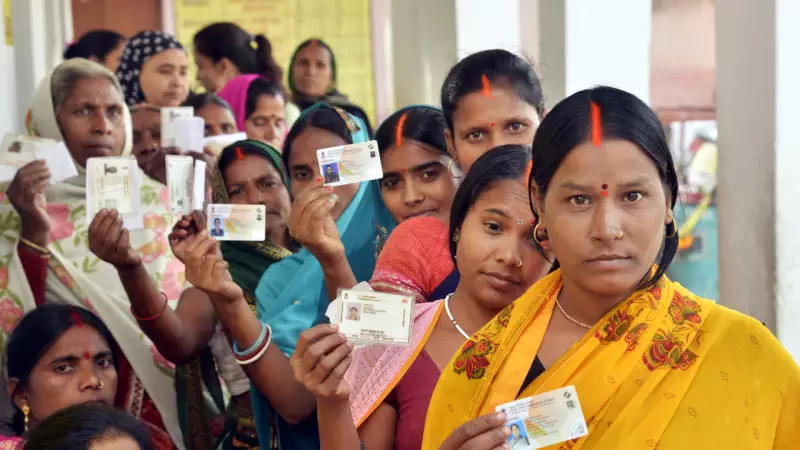
The 2025 Bihar Legislative Assembly election has concluded, delivering two monumental headlines: a resounding clean sweep for the National Democratic Alliance (NDA) and an unprecedented voter participation rate not witnessed in the state for over seven decades.
Women Electorate Drives Historic Participation
While the NDA's victory is significant, the most transformative story of this election is the seismic shift in voter demographics. For the first time in Bihar's history, women voters not only outnumbered men at the polling booths but also shattered all previous turnout records. The overall voter turnout reached 66.91 per cent, the highest since the state's first elections in 1951. This surge was overwhelmingly driven by women, with a staggering 71.6 per cent of female electors casting their ballots, nearly nine percentage points higher than the 62.8 per cent turnout among men.
This trend was consistent across both phases of the election. During the first phase, 69.04 per cent of women voted compared to 61.56 per cent of men. The momentum grew in the second phase, where an remarkable 74.03 per cent of women voters exercised their franchise, again decisively surpassing the 64.1 per cent male turnout.
The Policy Foundation of NDA's Success
This overwhelming participation from women voters proved to be the decisive factor, tilting the mandate firmly in favour of the NDA. Analysts point to a suite of welfare schemes specifically aimed at women's economic empowerment as a key catalyst. A prominently discussed initiative was the direct Rs 10,000 assistance for women seeking to start small enterprises.
The critical contrast between the competing alliances was stark. The NDA had already transferred the funds, placing money directly into women's bank accounts, while the opposition Mahagathbandhan's similar offer remained a campaign promise. For a vast number of women voters, this tangible benefit versus a future pledge made a crucial difference.
Beyond a Single Scheme: A Legacy of Empowerment
However, the support for Chief Minister Nitish Kumar among women was not built overnight. It rests on a foundation laid over nearly two decades in power. His government has consistently rolled out policies focused on women, from reservations in panchayati raj to the pioneering Jeevika self-help group movement. These long-term measures have systematically expanded women's economic roles and fortified their presence in local governance.
This established track record gave greater credibility to the NDA's 2025 campaign promises. Initiatives like the women employment scheme targeting 22 lakh women, the ambitious plan to create one crore 'Lakhpati Didis', and the Mission Crorepati push for women-led enterprises resonated powerfully because they fit into a familiar narrative of economic empowerment. Unlike the opposition's focus on direct cash transfers, the NDA championed a blended approach of skill development, credit access, and SHG-driven growth, effectively positioning women at the very center of Bihar's development story.
The 2025 Bihar election stands as one of the clearest examples of women emerging as a definitive and powerful voting bloc. With their turnout nearly nine percentage points higher than men's, they have irrevocably influenced the state's political direction. As the results are analyzed, one conclusion is inescapable: the women of Bihar are no longer passive observers. They are active, influential, and have now decisively shaped their state's political future. This historic mandate is as much a victory for the NDA's policies as it is a triumph for the record-breaking number of women who came out to support them, heralding a new era where their voices are not merely heard, but are instrumental in charting the course ahead.





